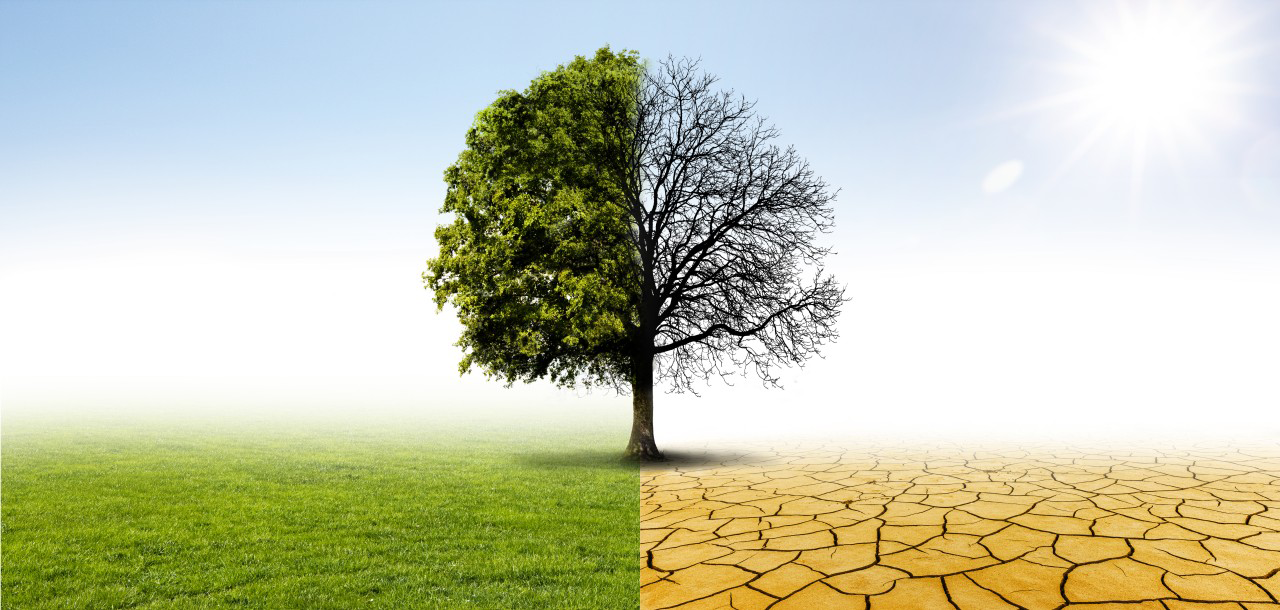Naturally technical specialists
A disaster on a climatic or environmental scale implies full mobilization of the adjuster and his technical added value.
Natural resources are now at the center of our concerns after centuries of exploitation by mankind. Nature is the source of everything we owe it. It gives but is capable of taking back. It goes wild and often leaves destruction and disarray in its wake.
It is in this context that the loss adjuster intervenes at the request of the insurer, at the service of the insured. Today, let’s shed light on these climatic or environmental claims. Two distinct notions to be defined in order to understand the scope of the loss adjuster’s actions, whether on-site or remotely.
Of the shade…
So let’s clarify two key concepts: climate disaster and environmental disaster. What is a climate disaster? How is it different from an environmental disaster? Explanations.
Climatic events are the results of climate fluctuations. This includes natural disasters (CAT-NAT). Defined by law as “damaging natural phenomena of abnormal intensity”, natural disasters can have several origins. The climate logically, with floods, mudslides, avalanches, droughts, and storms which, depending on their intensity, are similar to hurricanes or cyclones. Second and not least, the geophysical environment, which refers to the study of the physical characteristics of our planet using indirect measurement techniques. From the point of view of sinistrality, this geophysical factor is characterized by subsidence, landslides, earthquakes, volcanic eruptions, or tidal waves. The magnitude of the disasters is therefore large, although in practice most of the climatic events recorded are floods or droughts.
In the second part, environmental damage is related to ecology and pollution. Contamination occurs when solid, liquid, gaseous, or thermal irritants and contaminants are released into the environment. Disasters occur when damage is caused to soil, air, or water, whether underground or on the surface. In a report issued by an American insurer in 2017, 31% of pollution incidents are due to hydrocarbons, 24% to legacy pollutants such as acidic substances, ashes, fertilizers, and other suspended matter. The remainder is divided between wastewater (20%), metal compounds (7%), industrial waste (7%), and new contaminants such as asbestos and bulk soil gases (10%). One thing is certain: no sector is immune to an environmental incident. With global warming, fire-related incidents have increased drastically, becoming one of the leading causes of material losses in 2017 according to the same report. Rising temperatures encourage the spread of fires, especially in dry regions. This is a set of elements that the adjuster must take into account on a daily basis, at each of his interventions on site.
On-site assessment: technical know-how
No rules are being followed by the climate incident. Impossible to anticipate it down to the minute. Nevertheless, seasonality is a valuable aid in understanding what type of loss is likely to occur. At their level, local authorities draw up Risk Prevention Plans (RPPs) based on the topography of their territory, their exposure to risks, etc. Validated by the prefects, these RPPs list a set of recommendations for the inhabitants of the area concerned. For example, it is normally impossible to build one’s home on land in a flood-prone red zone. Indeed, the structure could find itself submerged in the event of heavy rain or excessive flooding. When flooding occurs in areas that are no longer suitable for building, the house is razed before being rebuilt elsewhere only. The existence of the PPRs and their recommendations make it possible to avoid this kind of pitfall. When he arrives at the site of the claim, the adjuster, therefore, refers to these recommendations and the history of the land before giving his technical added value to psychologically affected policyholders. Let’s stay with the flood register to illustrate the point.
Floods are high-stakes issues that can affect the entire city. They involve heavy material damage and sometimes, unfortunately, loss of life. In these situations, empathy is mandatory. It is necessary to arrive with a certain humility in front of interlocutors who have lost everything. All the more so as the flood leaves traces. On the scale of a town, the adjuster has to note the damage, judge what is urgent, what needs to be consolidated, what can be dried up from what has to be thrown away. The adjuster, through his technical assessment, adapts the protective measures to the claim in order to save what can be saved. It is a whole job in which misfortune and objectivity in the face of losses are mixed. It is the same for companies that have suffered losses. From the flooded factory to the burnt-out offices, the adjuster faces the head of the company, the financial director, and the employees’ representatives. All are waiting for answers. From then on, his role is to provide solutions such as cleaning, relocation, or even issuing a deposit. In any case, a visit to the site is essential. Proof of this can be seen in our second example, drought.
Drought, which is regarded as a natural disaster, is a unique case typology. On the one hand, because it is confusing for the insured. On the other hand, because it implies being able to make a decision only in possession of a multitude of documents. Which ones? The structure, the plans, the materials used, the soil survey, and the outline of the drought report produced by the French Federation of Insurance Companies (FFIC). Once these elements have been assimilated, the loss adjuster shares all his technical skills to persuade policyholders who are convinced that their claim is well-founded. However, in 50 to 70% of missions, drought is not the determining factor in the appearance of damage. Other factors such as the natural expansion of materials are the cause of cracking. Drying out is primarily recognized by ground movements such as settling or cracking of the soil. This is the only place where cracks may appear due to drought.
Based on this, the specialist recommends a number of measures to restore the moisture balance of the ground. These include, for example, the eradication of parasitic waterways and the felling of trees in the vicinity of the building. The adjuster can then recommend to the insured and his insurer a solution for restoring the stability of the building. The specialist’s role is not only to educate but also to advise the policyholder. He makes them aware of the need to bring their property into line with the application of PPR recommendations in order to prevent any future occurrences. An approach that is much more difficult from a distance.
What about visio-expertise?
Hard or even impossible for some typologies of cases, such as high-stake natural disasters to intervene with visio-expertise. For example, take Irma, for example, a major hurricane of category 5 on the Saffir-Simpson scale. Landscapes were completely devastated by winds of up to 287km/h and the entire infrastructure related to networks or telephony was blown away. Highways were blocked by rubble and houses were blown away. Visio-expertise comes up against the extent of the damage, which is literally priceless from a distance. The same is true for some smaller-scale disasters. For example, to understand a landslide, a visit to the site is necessary to analyze the soil typology or the stability of the layers.
However, if the cause is already known, such as in the case of a climate event, video expertise is valuable for determining the damage and implementing some emergency measures. It gives an overall view of the damaged area, provided that the insured follows the expert’s instructions. After a tour of the impacted area, the image enables the stakes of the claim to be quickly defined. It provides a framework prior to on-site intervention. Besides the increasing efficiency of this software, the coronavirus crisis has accelerated the deployment and its use. Through the Force Majeure Appraisal (FMA), the adjuster can respond to the volume while providing his technical expertise. On average, with the FMA, it is possible to process 5 to 6 files per day.
The last example is environmental disasters where pollution from external elements cannot be resolved remotely. It is essential to intervene quickly to avoid further polluting nature. Let us illustrate this with oil pouring on an industrial site, the risk of pollution of the soil and the surrounding area is undeniable. In fact, the establishment of an anti-pollution barrier requires the prompt intervention of the expert. The latter implements appropriate procedures to limit migration into soils and rainfall watersheds. Despite some protections, such as oil separators and other retention ponds, action should be taken as soon as possible to reduce this type of pollution.
Ultimately, a major climatic or environmental disaster implies full mobilization of the expert and its technical added value. Faced with people in need and in the face of loss, a presence on the spot allows for more answers to questions. In many situations, visio-expertise is a valuable ally in determining the extent of the damage. In all cases of this nature, psychology is a factor to consider when performing an on-site or remote intervention. Empathy, listening, weighting, qualities that the expert combines for the good of the third party affected and for the preservation of the environment.
Gaëlle POLLONI – Loss adjsuter – Technical Manager| Stelliant Loss Adjusting
Nicolas SERRES – Construction Loss adjuster | Stelliant Loss Adjusting








